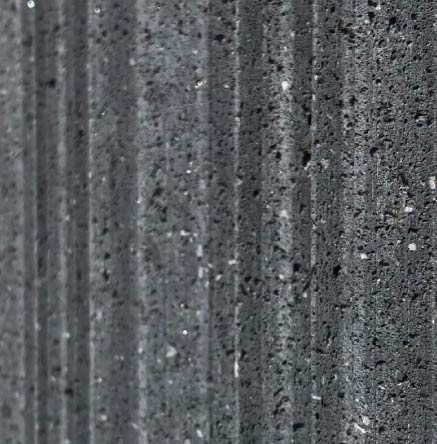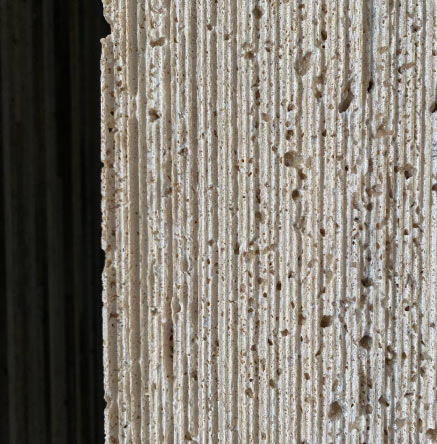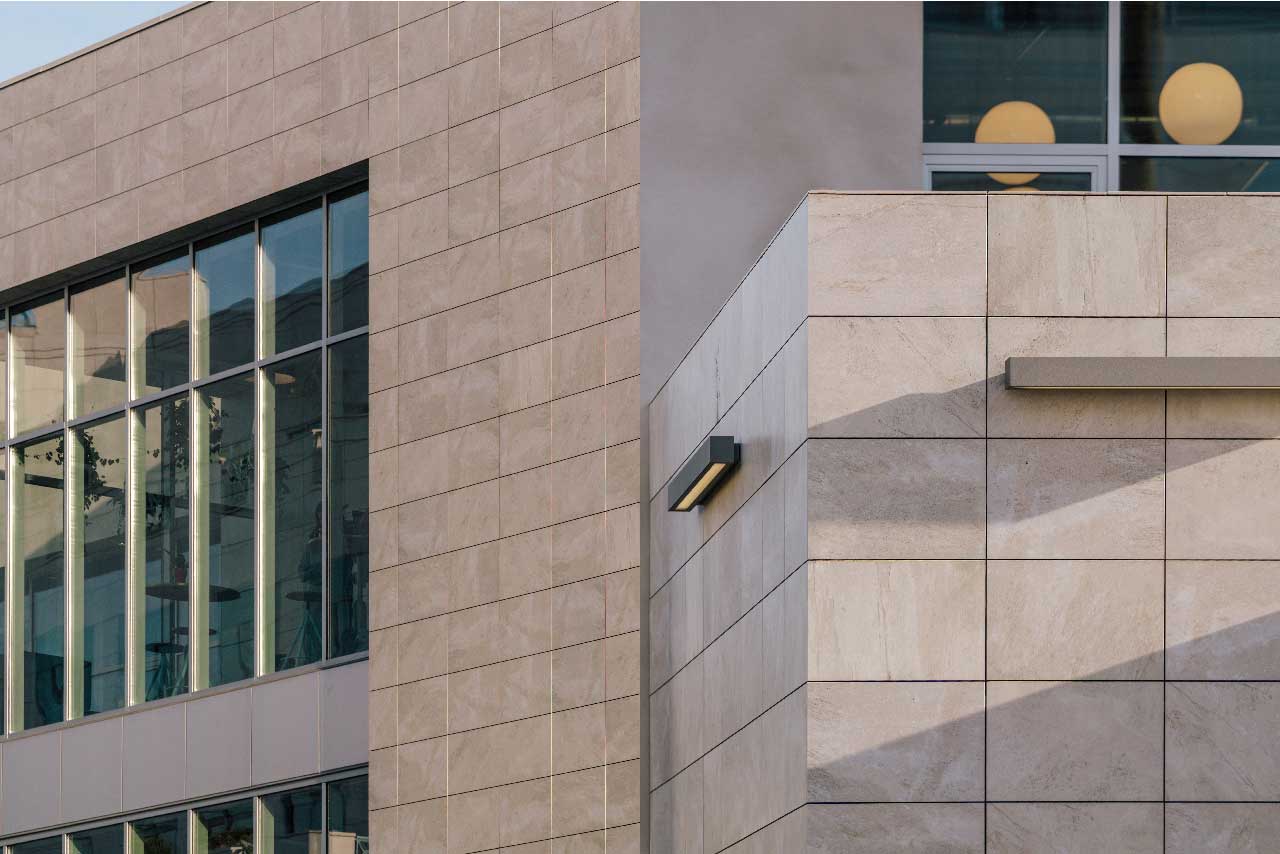
Using stone as the hardest and most durable building material requires certain processes to become an efficient product. The pieces of stone removed from the mines cannot be used in their raw form, and it is necessary to carry out operations on them in stone-cutting factories to make them ready for use.
The first step in stone processing is cutting.
The stones extracted from the mine enter the cutting stage in order to reach the desired size. There are various methods to create a cut in the stone. Cutting the stone by a saw is one of the most common methods in stone quarrying factories. The different types of saws used in factories are as follows:
Soft saw on | It is used in the processing of limestones such as travertines, marbles and marbles.
Hard saws These types of saws, as their name suggests, are used for hard stones such as granites.
Peak saws They include circular disks, the size of the disks can vary according to the dimensions of the cups, and they are used for cutting stone cups in factories and quarries.|
Sub and polishing stage
After cutting the stone, we will enter the sub and polishing stage to continue the processing process. The sub and polishing of each stone is different according to its type because each stone depends on whether it is soft (such as marble) or hard (such as granite). ) needs its own special abrasives. In this stage, the defects of the stone are removed in such a way that the extra surfaces of the stone are sanded and its cavities are filled with special materials and the stone is prepared for the next step.
The construction stone processing process includes steps in which the raw stone is processed using different machines to be used in the building.
In the first step of the stone processing process, i.e. stone preparation and cutting, the surface of the stone must be completely cleaned, otherwise it may be difficult to extract its material later.
Stone cutting is usually extracted in large and asymmetrical dimensions, and it is necessary to cut it into required pieces at the beginning of processing.
It is worth mentioning that stones are cut with the help of devices with steel blades with two diamond teeth, disc or wire.
According to the type of stone, there are different methods before the process or during the process, and it should be kept in mind that the rules for each stone are different in the implementation of the process.
In short, building stones go through different stages in the processing process, which includes the following steps.
-Stone cutting | Saw, peaker, wire cutter |
- Strengthening stone
-Stone work resin
-Sab Zani
-Edge
Stone strengthening
One of the distinctive features of stone is its strength and resistance. In factories, in order to further strengthen the stones, they use two methods, epoxy and resin mesh.
Epoxy is actually a very thin and clear liquid that plays a significant role in increasing the strength and resistance of natural stone. The correct processing of natural stone largely depends on the type of epoxy used and the correct application of the epoxy. In fact, epoxy is very efficient in completely covering the surface of the stone and all its joints. To do this, in the first step, epoxy is poured on the surface of the stone, the stone is heated a little so that the liquid penetrates all the joints. The higher the quality of epoxy, the better it penetrates into the seams, and on the other hand, high-quality epoxy does not turn yellow over time. This issue is very important.
Mesh is also one of the parts that can be very effective in the correct processing of natural stone. The nets are attached to the back surface of the stone using epoxy, which makes the stone more stable and safe; if a piece of stone breaks, the net holds it and prevents it from falling. It is necessary to know that there are also types of laces with different qualities and prices.
stone work resin
Stone resin is a transparent colored substance that is used to cover surfaces such as stone, cement or brick. Applying resin will prevent porous or porous damage on stone surfaces, as well as increase its durability.
Subbing
A process in which stones are rubbed with a thin layer of their surface by a stone grinder, and the surface of the stone becomes smooth and shiny. The sanding operation takes place after cutting the stone. In the way that there are abrasives on the grinding stations, each stone is placed on the rails of the machine after cutting, and by means of this abrasive, the roughness of the stone surface is smoothed and smoothed.
Introduction of construction stone processing types
Stone surface treatment is done in various ways. Each method creates a different texture and shape on the surface of the stone; The types of processing methods and the so-called payment/finishing of stones are as follows.
Flame
Scratch
Hond
Bush-hammer
an ax
Polish
Leather
Sandblast / Sandblast
Fluoti / Flooted
Flame / Flame
Flaming or so-called stone burning is a method that creates a rough texture on the surface of the stone by taking a flame; This is one of the common ways to create texture on stone.
Scratch
In the process of this processing, regular or irregular scratches are created on the surface of the stone, which has a groove-like effect, but in an irregular and prominent way.
Honed
Honing the stone gives a matte but completely smooth and uniform surface to the stone and no light is reflected from the surface of the stone.
Bush-hammer / Bush-hammer
In this process, using equipment, diamond bits are rubbed on the surface of the stone so that the surface of the stone is formed regularly and with a dot-point needle pattern. This action increases the friction of the old surface
and prevents it from slipping.
Sandblast/Sandblast
It is a combination of two Latin words sand, which means sand, and blast, which means to launch. Which is one of the methods of dealing with the surface of stones, in which sand or silica is sprayed on the surface of stones with high pressure using wind pumps, and the pressure applied to the stone by abrasives in sandblasting can cause The texture is perforated or rough on the stone.
an ax
Usually, stone axing is done by industrial machines, but sometimes it can be done manually. The ax that hits the smooth surface of the stone scrapes a part of the stone surface and the surface of the stone is cut like a pterygium.
Polish
Polish literally means to polish or shine. Stone polishing is used to clarify stone surfaces and remove its fine pores
Leather
In this method, the surface of the stone becomes matte and has a velvety texture. Instead of polishing with wire brushes or acid, these stones increase the porosity of the stone by crushing the soft parts and often turn into leather and classic stones.
Flute
In this method, the stone surfaces are cut with a blade that is partially scratched and partially raised, and its texture is raised and flute-shaped grooves.


